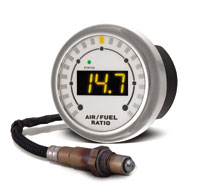
In the event of poor vehicle performance, it is common for the turbocharger to take the blame. This, however, is usually not the case, with the possible culprits likely to be one of the following:

The exhaust gas system
The various exhaust gas after-treatment and recirculation systems used in modern vehicles create many contact points where throughput can be reduced. If the exhaust gases cannot flow freely, similar symptoms to a turbocharger fault occur. Only close examination of the exhaust gas tract unveils the real culprit.
The recirculation air valve
The boost pressure control valve enables fast responsiveness, prevents abrupt braking of the rotor when the throttle valve is closed, and protects petrol engines from over-speeding.
When these properties are no longer given, and if a pronounced turbo lag is noticeable, often the complete turbocharger is replaced. But, in many cases, the valve can be replaced separately (ideally promptly, in order to prevent damage to the turbocharger).
The air mass flow meter
This determines the air volume flowing into the engine. The engine control unit thus calculates the optimal quantity of fuel and additional values for the air-fuel ratio. An incorrect measurement can lead to poor performance and it can even cause dry running – symptoms which could also indicate a defective turbocharger. A glance at the measurement values of the air flow meter helps to find the actual cause.
Cracks in the air-guiding ara
These can lead to unfiltered air entering into the system within specific speed ranges. The result is an inadequate air-fuel ratio, along with a noticeable lack of performance and gradual wear of all mechanical parts. A leak detection spray is recommended for quick identification of the leak points.









